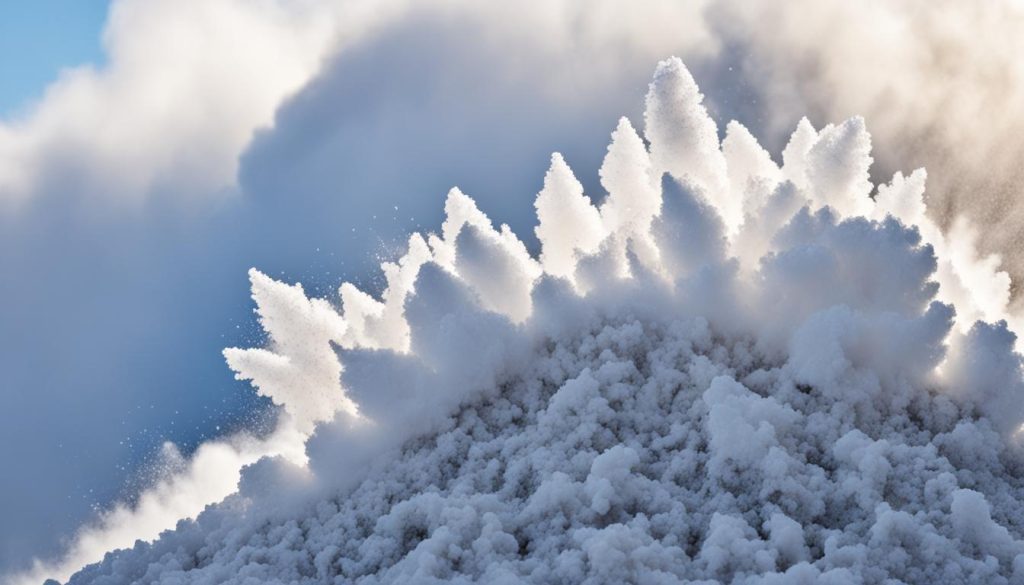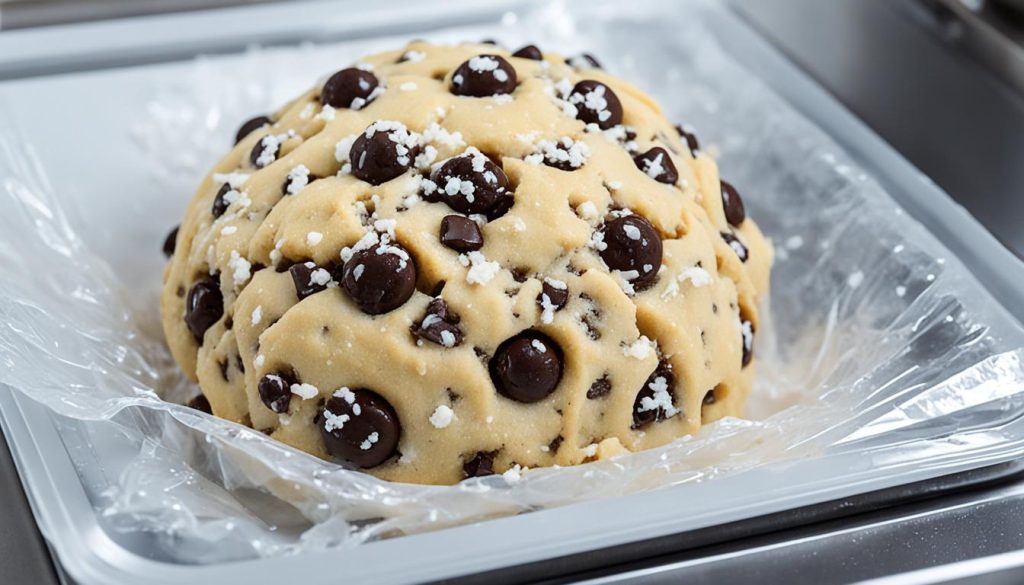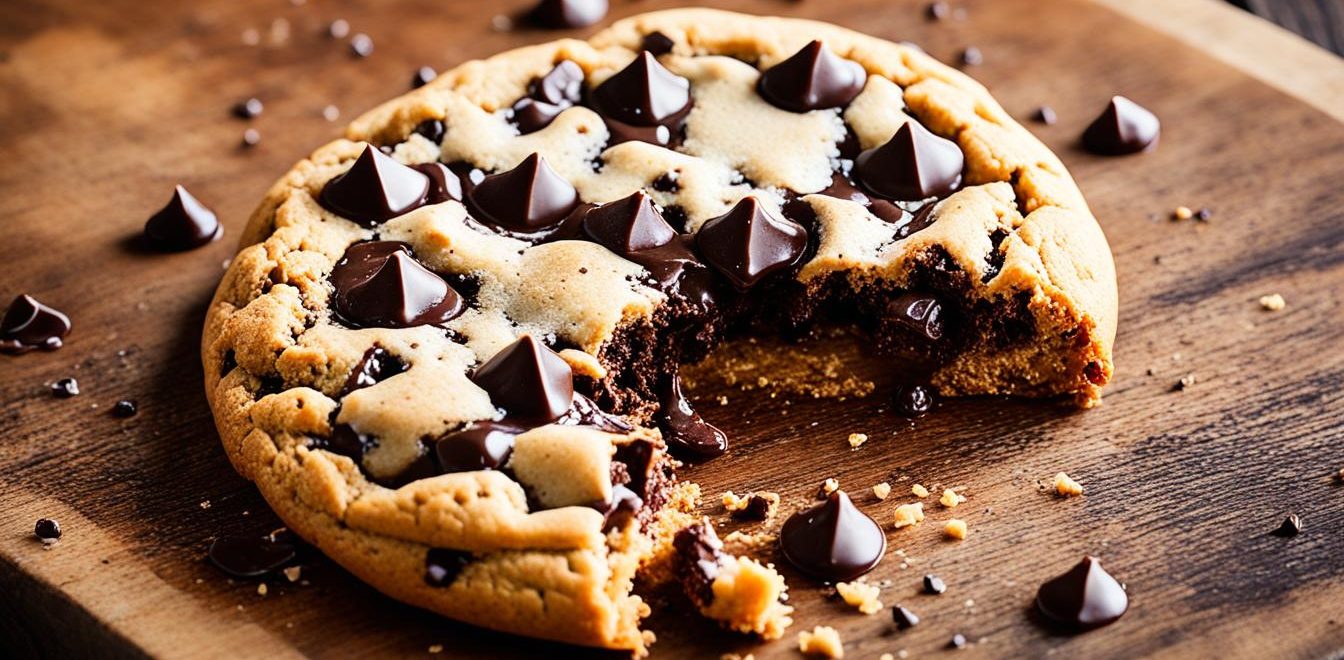Table of Contents
Are you on a quest to find the best chocolate chip cookie recipe? Do you dream of baking homemade chocolate chip cookies that are irresistibly chewy and soft? Look no further because we have the ultimate guide that will unlock the secrets to achieving cookie perfection.
But before we dive into the recipes and techniques, let’s challenge a common belief. Are classic chocolate chip cookies the only way to go, or can we explore delicious variations without compromising the essence of this iconic treat?
In this comprehensive guide, we will take you on a tantalizing journey through the world of chocolate chip cookies. From understanding the anatomy of these delectable morsels to experimenting with different ingredients and methods, we’ll equip you with the knowledge and skills to become an expert cookie connoisseur.
Get ready to elevate your cookie game and discover the secrets behind creating the most delectable, melt-in-your-mouth chocolate chip cookies.
Understanding the Anatomy of a Chocolate Chip Cookie
Before we dive into the recipes and techniques, it’s important to understand the anatomy of a chocolate chip cookie. By learning about its taste, texture, and appearance, you’ll be able to create cookies that perfectly suit your preferences.
Let’s start with the taste. A well-made chocolate chip cookie should have a balance of sweetness and richness. The combination of sugar and butter creates a sweet and buttery flavor, while the chocolate chips add a touch of bitterness. The inclusion of vanilla extract enhances the overall taste and adds a subtle aroma.
Next, let’s talk about the texture. A classic chocolate chip cookie is known for its mix of chewiness and crispiness. The precise balance between these two elements is critical. A cookie that is too chewy might be doughy and dense, while a cookie that is too crispy can become overly dry. Achieving the perfect texture involves careful measurements and baking techniques.
Finally, the appearance of a chocolate chip cookie plays a role in its overall appeal. The golden brown color on the edges indicates that the cookie is fully baked and has a nice crunch. The center of the cookie should be a slightly lighter shade, with a soft and gooey texture. The presence of visible chocolate chips adds visual interest and makes the cookie even more enticing.
Now that you have a basic understanding of the chocolate chip cookie’s anatomy, you’ll be better equipped to experiment with recipes and techniques to achieve the perfect cookie. In the following sections, we’ll explore different variations and tips to help you create your own delicious chocolate chip cookies.
The Control Recipe: Nestle Tollhouse Chocolate Chip Cookies
The Nestle Tollhouse Chocolate Chip Cookie recipe is widely considered the classic and go-to recipe for chocolate chip cookies. This control recipe will serve as the baseline for our variations and experiments.
Here’s what you’ll need:
- 1 cup (2 sticks) unsalted butter, softened
- 3/4 cup granulated sugar
- 3/4 cup packed brown sugar
- 1 teaspoon vanilla extract
- 2 large eggs
- 2 1/4 cups all-purpose flour
- 1 teaspoon baking soda
- 1/2 teaspoon salt
- 2 cups (12 ounces) chocolate chips
Here’s how to make it:
- Preheat your oven to 375°F (190°C) and line a baking sheet with parchment paper.
- In a large bowl, cream together the softened butter, granulated sugar, and brown sugar until light and fluffy.
- Beat in the eggs one at a time, then stir in the vanilla extract.
- In a separate bowl, whisk together the all-purpose flour, baking soda, and salt. Gradually add the dry ingredients to the wet ingredients, mixing until just combined.
- Stir in the chocolate chips until evenly distributed throughout the dough.
- Drop rounded tablespoonfuls of dough onto the prepared baking sheet, spacing them about 2 inches apart.
- Bake for 9 to 11 minutes, or until golden brown around the edges.
- Allow the cookies to cool on the baking sheet for a few minutes, then transfer them to a wire rack to cool completely.
- Enjoy these classic Nestle Tollhouse Chocolate Chip Cookies with a glass of milk or a cup of coffee!
Now that you have the classic recipe as a starting point, let’s dive into the exciting variations and experiments to create the perfect chocolate chip cookies.
Tweaking the Recipe: Baking Powder Experiment
In our quest to create the perfect chocolate chip cookies, we embarked on an experiment to see how a simple ingredient swap could transform the outcome. For this experiment, we decided to remove the baking soda from the control recipe and replace it with baking powder. The baking powder serves as a leavening agent, giving the cookies a lighter and more cake-like texture.
By using 1/2 teaspoon of baking powder instead of baking soda, we observed a significant change in the cookies’ texture. As the cookies baked, they became more puffy and cakey, causing them to rise higher, creating a delightful, pillowy effect.
Using baking powder in place of baking soda resulted in cookies that were less dense and more tender. The absence of baking soda removes the slight tanginess that it imparts, allowing the other flavors, like the rich chocolate chips, to shine through. The texture and taste of these cakey cookies bring a new twist to the classic chocolate chip recipe.
So if you’re looking to add a little lift and a softer texture to your chocolate chip cookies, consider experimenting with baking powder. It’s a simple substitution that can make a world of difference in your baking results.
Experimenting with different ingredients is one of the joys of baking. In the next section, we’ll explore another important element in creating the perfect chocolate chip cookies: finding the right balance between baking powder and baking soda.
Finding the Perfect Blend: Baking Powder and Baking Soda
Building on the previous experiment, we discovered that the combination of baking powder and baking soda in the control recipe creates exceptional chocolate chip cookies.
In this experiment, we added 1/4 teaspoon of baking powder and 1/4 teaspoon of baking soda to the control recipe. The result? Cookies with delightful crisp edges, a soft and chewy middle, and just the right amount of spread across the baking sheet. The blending of these two leavening agents led to the perfect overall texture and taste.
By using baking powder and baking soda together, you can achieve the ultimate balance of flavors and textures in your chocolate chip cookies. The baking powder helps create those crispy edges while the baking soda adds buoyancy and contributes to the chewy middle.
Take your homemade cookies to the next level by experimenting with the exciting combination of baking powder and baking soda. You’ll be amazed by the delectable results!
Baking Powder vs. Baking Soda: What’s the Difference?
Baking powder and baking soda are both leavening agents commonly used in baking. Although they may seem similar, they have distinct characteristics that contribute to different aspects of the baked goods.
- Baking Powder: Baking powder is a combination of baking soda, cream of tartar, and a dry acid. It is a complete leavening agent on its own and activates when combined with moisture. Baking powder is ideal for recipes that do not contain other acidic ingredients.
- Baking Soda: Baking soda, also known as sodium bicarbonate, is purely alkaline. It requires an acidic ingredient, such as brown sugar or buttermilk, to activate and produce carbon dioxide bubbles, which cause the dough or batter to rise.
When used together in the right proportions, baking powder and baking soda create a synergistic effect, resulting in cookies that are simultaneously crispy and chewy. The blending of these two leavening agents is a game-changer in the world of chocolate chip cookies.
Try Our Recipe: Perfectly Balanced Baking Powder and Baking Soda Chocolate Chip Cookies
Ready to bake a batch of cookies with crispy edges and a chewy middle? Try our tried-and-true recipe below.
- Preheat your oven to 375°F (190°C) and line a baking sheet with parchment paper.
- In a medium-sized bowl, whisk together 2 1/4 cups of all-purpose flour, 1/2 teaspoon of baking powder, 1/2 teaspoon of baking soda, and a pinch of salt.
- In a separate large bowl, cream together 1 cup of unsalted butter, 3/4 cup of granulated sugar, and 3/4 cup of packed brown sugar until light and fluffy.
- Add 2 large eggs and 1 teaspoon of vanilla extract to the butter-sugar mixture, and mix until well combined.
- Gradually add the flour mixture to the wet ingredients, mixing until just combined.
- Stir in 2 cups of your favorite chocolate chips or chunks.
- Using a cookie scoop or tablespoon, drop rounded amounts of dough onto the prepared baking sheet, spacing them about 2 inches apart.
- Bake for 10-12 minutes or until golden brown around the edges.
- Allow the cookies to cool on the baking sheet for a few minutes before transferring them to a wire rack to cool completely.
Enjoy these delicious cookies with your family and friends! The perfect blend of baking powder and baking soda will leave everyone craving for more.

Experimenting with Flour: More Flour, More Crumbly Dough
In our quest to create the ultimate chocolate chip cookie, we conducted an experiment involving the amount of flour used in the recipe. By increasing the flour to 2 cups, we aimed to achieve a more crumbly dough and thicker cookies.
This alteration had a significant impact on the texture and appearance of the cookies. The dough became noticeably crumblier, making it easier to handle and shape into small, round mounds. As the cookies baked, they held their shape without excessive spreading, resulting in thick cookies that retained their form.
While the cookies were smaller than usual due to the reduced spread, their thickness gave them a satisfyingly substantial presence. Biting into these cookies revealed a delightful crumbly texture, with a slight crunch on the outer layer and a tender, slightly undercooked center. The extra flour contributed to an indulgent, ooey, and gooey experience that chocolate chip cookie enthusiasts will relish.
Experimenting with flour is just one of the many ways to elevate your chocolate chip cookies. Stay tuned for the next section in which we explore the effects of playing with melted butter for flatter cookies with crisp edges.
Playing with Butter: Melted Butter for Flatter Cookies
When it comes to baking chocolate chip cookies, the type and state of butter you use can make a significant difference in the final result. In this experiment, we decided to deviate from the traditional room temperature butter and instead used melted and cooled butter.
This simple swap had a noticeable effect on the cookies. The melted butter resulted in flatter cookies with a shiny, crackled top, reminiscent of indulgent brownies. The change in butter texture also contributed to the development of more crisp edges, adding a delightful textural contrast to the cookies.
Using melted butter in your chocolate chip cookie recipe can create a different sensory experience. The visual appeal of the shiny, crackled top is a treat for the eyes, while the crisp edges give a satisfying crunch. These slight adaptations to the classic control recipe demonstrate how small changes can yield exciting variations in taste and appearance.
If you prefer flat cookies with a shiny crackled exterior and crisp edges, consider experimenting with melted butter in your own recipe. You may discover a new favorite way to enjoy this timeless treat.
Now, let’s move on to another fascinating experiment involving sugar substitution.
Sugar Swap: All Granulated Sugar vs All Brown Sugar
In our quest for the perfect chocolate chip cookies, we couldn’t resist exploring the effects of using all granulated sugar or all brown sugar in the recipe. It’s amazing how a simple change in sugar can completely transform the outcome of your cookies!
Using All Granulated Sugar: When we replaced the brown sugar in the control recipe with granulated sugar, the cookies took on a different character. They turned out flat, with a pale white color, and a chewy, slightly crunchy texture. While they lacked the depth of flavor that the brown sugar provides, they still had a pleasant sweetness.
Using All Brown Sugar: On the other end of the spectrum, using all brown sugar resulted in a remarkable difference. The cookies turned out thick, with a beautiful brown color and a soft, almost melt-in-your-mouth texture. The brown sugar contributed to a rich, butterscotch flavor that was delightfully intense.
However, it’s important to note that the original control recipe strikes the perfect balance by using a combination of both granulated and brown sugar. This combination yields a cookie with a light golden color, a chewy texture, and a subtle butterscotch flavor. So, if you’re aiming for a cookie that marries the best of both worlds, we recommend sticking to the control recipe.
The Difference All Sugar Makes
- All Granulated Sugar:
- Flat and white appearance
- Chewy texture with a slight crunch
- Moderate sweetness
- All Brown Sugar:
- Thick and brown appearance
- Soft and melt-in-your-mouth texture
- Intense butterscotch flavor
- Combination of Granulated and Brown Sugar (Control Recipe):
- Light golden appearance
- Chewy texture
- Subtle butterscotch flavor
Now that we’ve mastered the sugar swap, let’s move on to exploring the power of chilling the dough, which can take your cookies to the next level of chewiness and flavor!
The Power of Chilling: 24-hour Chilled Dough
In this experiment, we discovered the remarkable impact that chilling the dough can have on the texture and flavor of chocolate chip cookies. We took our control recipe and decided to chill the dough in the refrigerator for a full 24 hours before baking.

The extended chilling period worked wonders for the cookies. When we pulled them out of the oven, we noticed that they were slightly thicker and had a more substantial bite compared to the control batch. The chilled dough led to cookies with a chewier texture, which many people find irresistible.
Not only did the chilled dough result in thicker cookies, but it also intensified the butterscotch flavor that is such a delight in chocolate chip cookies. The extended resting time in the refrigerator allowed the flavors to develop and merge, resulting in a deeper and more satisfying taste.
So, if you’re aiming for cookies with a chewier texture and a stronger butterscotch flavor, make sure to factor in some chilling time. It may require some patience, but the results are truly worth it. You won’t be disappointed!
The Ultimate Chewy Chocolate Chip Cookies Recipe
After experimenting with various tweaks and variations, we have created the ultimate chewy chocolate chip cookie recipe. This recipe combines the best elements from our experiments, including the use of bread flour for chewiness, a good amount of brown sugar for butterscotch flavor, and a 24 to 72 hour chilling period for optimal texture. This recipe will give you big, thick, super chewy cookies with a soft and gooey middle, crisp edges, and abundant chocolate chips.
Ingredients:
- 2 ¼ cups bread flour
- 1 teaspoon baking soda
- 1 teaspoon salt
- 1 cup unsalted butter, melted and cooled
- ¾ cup granulated sugar
- 1 cup packed brown sugar
- 1 tablespoon vanilla extract
- 2 large eggs
- 2 cups chocolate chips
Instructions:
- In a medium bowl, whisk together the bread flour, baking soda, and salt.
- In a large mixing bowl, cream together the melted butter, granulated sugar, and brown sugar until well combined.
- Add the vanilla extract and eggs to the butter mixture and mix until smooth.
- Sift the dry ingredients into the wet ingredients and mix until just combined.
- Fold in the chocolate chips.
- Cover the dough with plastic wrap and refrigerate for 24 to 72 hours.
- Preheat the oven to 375°F (190°C) and line a baking sheet with parchment paper.
- Using a medium cookie scoop, drop rounded balls of dough onto the prepared baking sheet.
- Bake for 10-12 minutes, or until the edges are golden brown.
- Allow the cookies to cool on the baking sheet for 5 minutes before transferring to a wire rack to cool completely.
Enjoy these ultimate chewy chocolate chip cookies with a glass of milk for the perfect indulgence. They are sure to satisfy your cravings for a delicious treat with their chewy texture and butterscotch flavor.
Conclusion
In conclusion, this ultimate guide to baking the perfect chocolate chip cookies has taken you on a journey through the world of this beloved treat. By understanding the role of different ingredients and techniques, experimenting with variations, and finding the right balance of flavors and textures, you can become an expert chocolate chip cookie baker.
Throughout the guide, we have explored the anatomy of a chocolate chip cookie, delving into how different ingredients and methods can affect taste, texture, and appearance. We started with the classic Nestle Tollhouse Chocolate Chip Cookie recipe and then ventured into various experiments, tweaking different elements to achieve different results.
By following the tips and recipes provided, you’ll be equipped with the knowledge and skills to create batches of chocolate chip cookies that are tailored to your preferences. Whether you prefer chewy cookies with a butterscotch flavor, crispy edges with a soft middle, or something entirely unique, this guide has you covered.
So go ahead, gather your ingredients, preheat your oven, and start baking your own delicious chocolate chip cookies. With the techniques and insights shared in this guide, you’ll be well on your way to mastering the art of baking these timeless treats. Happy baking!

